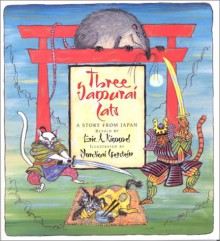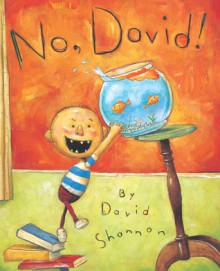
Genre: Japan / Animals / Trickery / Folktale / Peace
Year Published: 2003
Year Read: 2008
Publisher: Holiday House
Source: Library

“Three Samurai Cats” is an ancient Japanese folktale about how three samurai cats come to the Daimyo’s castle to defeat a savage rat with the last samurai cat giving the rat a taste of his own medicine. Eric A. Kimmel’s hilarious retelling and Mordicai Gerstein’s colorful drawings combine greatly to make a great and funny story from ancient Japan.
Eric A. Kimmel’s humorous storytelling of an ancient Japanese folktale is extremely inventive and witty as the last samurai cat uses a nonviolent stragety to defeat the rat at the end of the book. I found the part where the rat kicks the fierce samurai cat across the room to be extremely funny since the samurai cat looked funny when he crashed to the ground. Mordicai Gerstein’s illustrations are colorful yet scratchy, giving the story a humourous edge. One of the illustrations that really stood out the most for me was the image of Neko Roshi giving an intense look after he had just woken up when the rat yelled out “help!” when he was stuck in the rice ball. Neko Roshi’s eyes look huge like when a cat sees something that terrifies it and his hair also stood on its end. 
“Three Samurai Cats” is an excellent story about how violence does not always solve the problem and how clear thinking can always win the battle if you allow the right moment to come. I would recommend this book to children ages five and up since the younger children might not understand the Japanese vocabulary, such as daimyo and docho.
Review is also on: Rabbit Ears Book Blog

 Log in with Facebook
Log in with Facebook 














